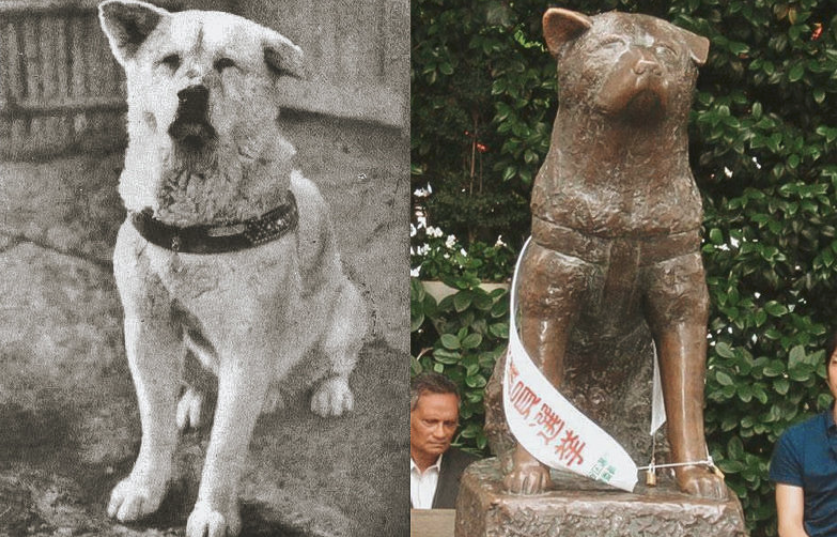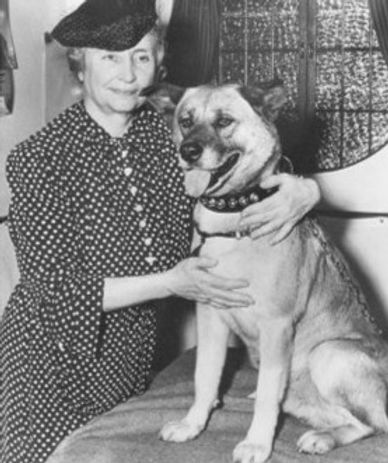All info and photos by permision of Kevin Izard-Carroll
JAPANESE AKITAINU HISTORY
The Japanese Akitainu originated from the Akita prefecture, in the Tohoku region of Northern Japan. Tohoku falls under Japan’s Yukiguni or ‘snow country’, and as a result, the residents of this area needed a breed with a powerful hunting instinct along with a thick weather-proof coat to survive the extreme northern climate. Within the Akita prefecture, in the mountainous terrain of Odate, the breeds ancestor was utilized as an efficient hunting animal, known as Matagi Inu.

In the 18th century, Japan’s fifth shogun Tokugawa Tsunayoshi came to power from 1680 to 1709. He was born in the year of the dog and, as a result, had a special interest in dogs. Residents referred to him as the Inu Kubo or ‘dog shogun’. In 1687, Tsunayoshi implemented ‘laws of compassion’ known as Shorui Awaremi no Rei. Seen as extreme for the time, the laws basically ordered anyone who harmed dogs to be imprisoned or even executed. From these laws spurred the transition of addressing dogs in a highly respectful manner and holding them to a high regard in Japanese culture.

During the Meiji era (1868-1912), the Japanese moved from being an isolated feudal society at risk of European colonization to a new paradigm of a modern, industrialized nation state who were influenced by western scientific, technological, philosophical, political, legal and aesthetic ideas. Perhaps most dramatically, it abolished the old system of a social hierarchy based on inherited status. Samurai, who historically were recognized as a warrior class, could now be farmers and engage in trade and commerce, and townspeople could now join Japan’s new army. As the warrior class became obsolete, dog fights grew in popularity to satisfy the cultural desire for fighting.
Tosa Fighting Dogs (Shikokuken crossed with Mastiff) were mainly used for dog fighting and crossed with other breeds such as the Akitainu. This led to the degeneration of the breed and impacted the Akitainu purity once seen. Through the dog fight driven-breeding practices, the breed became larger, more athletic and fearless with some lacking the iconic erect ears. In 1909, a governor for the prefecture; Masataka Mori ordered a law banning dog fighting outright and the Akitainu turned back to the primary function of guard dog. The dog tax of 1910 added further bad news for the breed, leading to thousands of Akitainu being slaughtered with thousands more being wiped out during the rabies epidemic.
Shigeie Izumi, the mayor of Odate, founded the Akitainu Preservation Society in 1927 known as Akita Inu Hozonkai (AKIHO) for which Yakumo Sou are a proud member today. In 1931, the Akitainu is formally named and around nine dogs are deemed natural monuments as well as the breed itself.
The Akitainu suffered more so during World War II. Many dogs were slaughtered for meat or fur. The only dog being excluded from such activity at the time was the German Shepherd as it was used by the Military. This brought about some people sending their dogs out of the country, hiding them, or cross breeding their dogs with German shepherds. The latter led to the rise of the American Akita, as many American Soldiers fell in love with the more substantial dogs resulting in the breeding from the German shepherds. They later took these dogs back to the USA. Against all orders, some individuals such as Ichinoseki Kuniro had kept a few dogs and immediately started breeding post-war. It was at that time that a man named Mr. Ito sold Akitainu of mixed blood to American soldiers, who then took them back to the USA where their popularity quickly soared. Outside Japan, people mistakenly considered these dogs to be that of the breed being bred in Japan. Fast forward to today, countries worldwide recognize both breeds who are being developed as the Akitainu and American Akita.

Helen Keller has been attributed by many to have taken one of the first Akita to America. Miss Keller was touring Japan in 1937 studying the physically handicapped. After hearing the story of Hachiko, she asked to be introduced to the breed. She was shown a two month-old puppy belonging to Mr. Ogasawara, a member of the Akita area police department, and immediately fell in love with him. His name was Kamikaze Go and Mr. Ogasawara agreed to give him to Miss Keller as a gift.
When Miss Keller returned to the United States two months later she took Kamikaze Go with her. Within one month, he died from canine distemper. It was then arranged for Kamikaze’s litter brother, Kenzan Go to be sent to the USA where he quickly became a close friend and protector of Miss Keller.
Fast forward to now, Japanese Akitainu fanciers like myself have dedicated their lives to research, develop and preserve this special breed. We work hard to conduct extensive genetic research prior to importing new dogs, health test any Japanese Akitainu part of our breeding program and educate through dog events and breed seminars. The history of the Japanese Akitainu is a complex one that is evolving in the USA to this day. It is why we cannot stress enough how important it is to educate yourself on the breed through clubs and individuals qualified to do so. We have seen an influx of attention in recent years from ‘new’ breeders in the USA and Canada so it is important to maintain your standards when sourcing a Japanese Akitainu for yourself.